Chapter 22: Electric Fields and Gauss’s Law
1/43
Earn XP
Description and Tags
An electric field is a vector field that represents the force exerted by an electric charge on other charges in its vicinity. Gauss's Law is a fundamental principle that relates the electric flux passing through a closed surface to the charge enclosed by that surface
Name | Mastery | Learn | Test | Matching | Spaced |
|---|
No study sessions yet.
44 Terms
Identify the correct expressions for an electric field, where r is a point in space and F(r) is the net force acting on a charge q.
E(r)=F(r) / q
The electric force on a charge at a point is ______ to the electric field at that point.
parallel
antiparallel
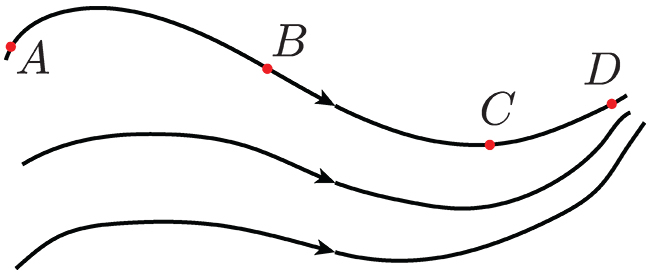
For the set of electric field lines shown, which of the following arrows best matches the direction of the electric field at point B?
↘

For the sets of electric field lines shown in the figure, identify the set which implies that the net force would point in two directions at the same point.
C
A test charge q0 is placed a distance of r from another point charge Q. What is the magnitude of the electric force on the test charge?
(2kλq0)/r
What are the units of the electric field?
Newtons per coulomb (N/C)
If you double the magnitudes of both charges in an electric dipole, what happens to the magnitude of the electric dipole moment?
It is doubled.
The electric force on a charge at a point is _________ proportional to the magnitude of the charge.
directly
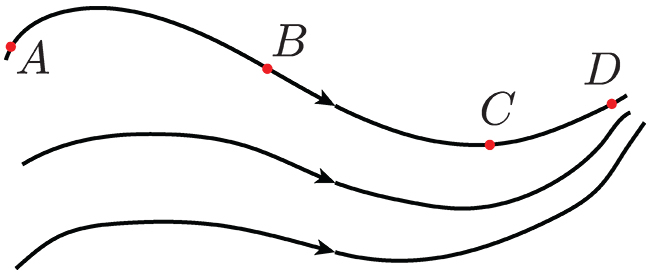
For the set of electric field lines shown, which of the following arrows best matches the direction of the electric field at point A?
↗
Which of the following versions of dq is used for a charge distribution along a line?
dq = λdx
Identify the correct statements about electric field lines.
They terminate at negative charges.
They originate at positive charges.
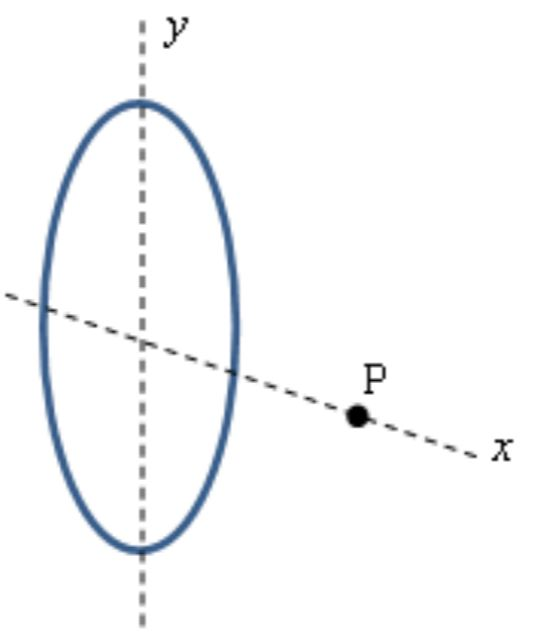
The image shows a ring of charge with a radius R in the yz-plane. You wish to find the electric field at point P in the picture. Which of the following expressions represents possible variables over which you can integrate to find E?
λRdθ
λds
What is the magnitude of electric force on a point charge q0 due to another point charge q (where r is the distance between the test charge and the point charge)?
F= (1 / 4πϵ0) *( ∣q⋅q0∣ / r²)
Identify the expression used to determine the magnitude of the electric field resulting from the charge distribution using the differential charge dq.
dE = k [(dq) / r²]
The electric dipole moment points from the ______ charge toward the ______ charge.
negative (-q)
positive (+q)
In the right-hand rule for the vector product of the electric dipole moment, the electric field, and the torque vector, what does the middle finger indicate?
Torque
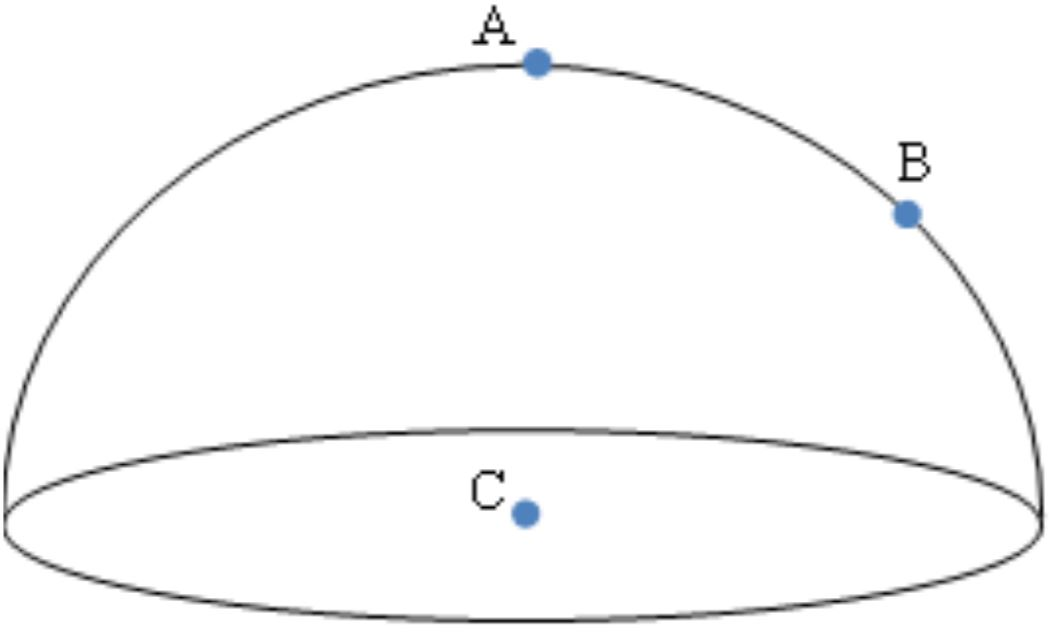
For the hemisphere shown in the figure, which arrow best describes the direction of the area vector at point C, which is in the middle of the flat bottom?
↓
Which of the following versions of dq is used for a charge distribution throughout a volume?
ρdV
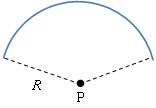
The image shows a portion of a ring of charge of radius R. You wish to find the electric field at point P in the picture. Which of the following expressions represents possible variables over which you can integrate to find E?
λds
λRdθ
In a charge distribution each differential charge element dq creates a tiny part of the ________ field expressed as dE.
electric
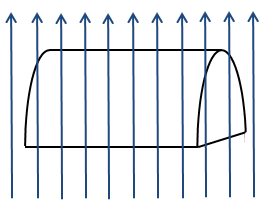
The figure shows a half cylinder of length L and radius R in a uniform electric field E→. What is the electric flux through the curved top of the cylinder?
2ELR
The torque on an electric dipole in an electric field is equal to _____ cross _____, where cross refers to the vector cross product. Fill in the blanks with the letters for the quantities.
p, dipole moment, or electric dipole moment
E or electric field
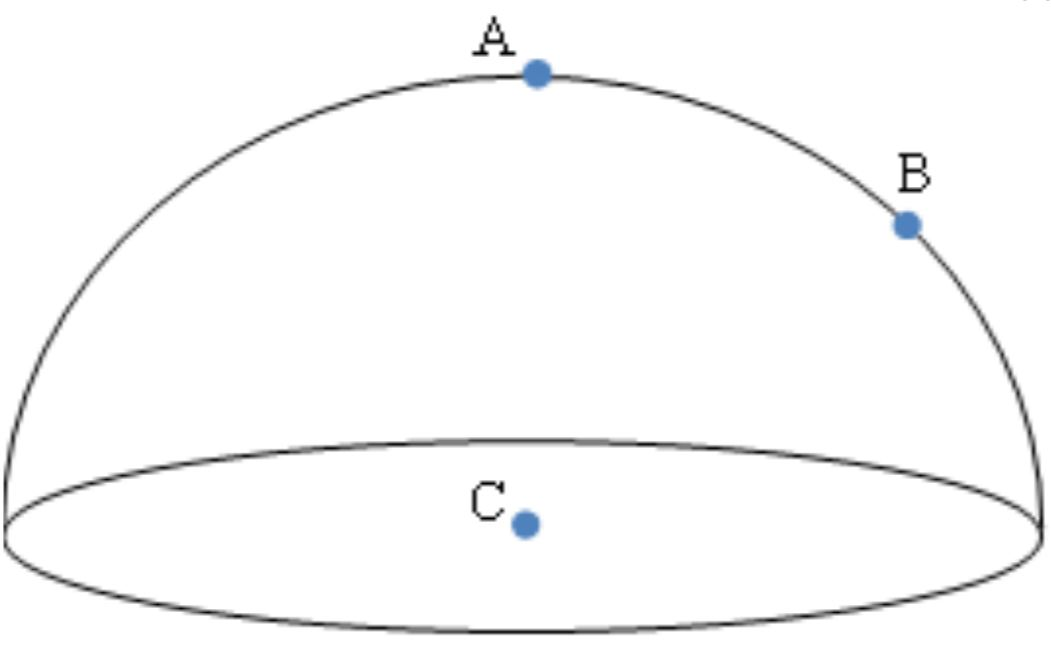
For the hemisphere shown in the figure, which arrow best describes the direction of the area vector at point B?
↗
You want to integrate over the surface of a sphere of radius R. What is the value of ∫SdA?
4πR²
Which of the following versions of dq is used for a charge distribution over a surface?
σdA
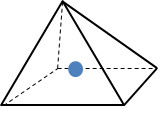
A point charge Q is enclosed by a Gaussian surface in the shape of a pyramid with sides of length L. What is the total electric flux through the pyramid?
Q/ε0
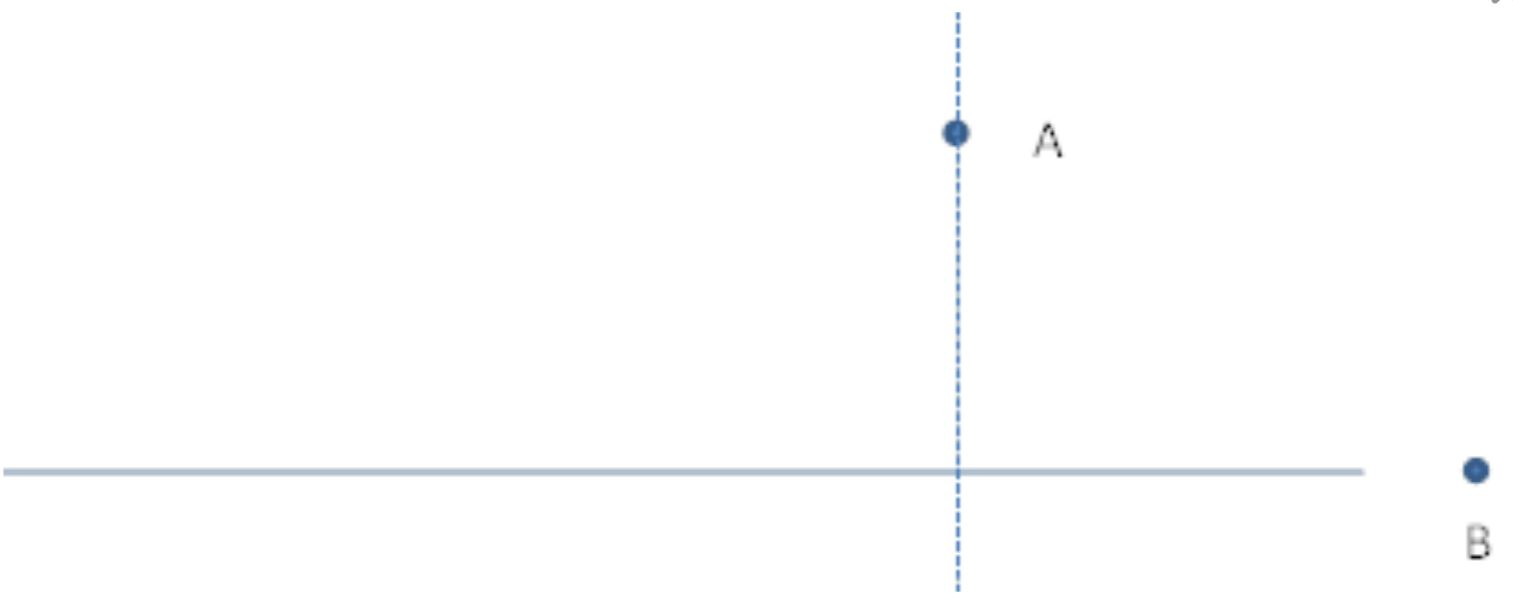
The image shows a long, straight line of charge drawn along the x-axis. If you wish to find the electric field at point B, which expression would you use for dq?
λdx
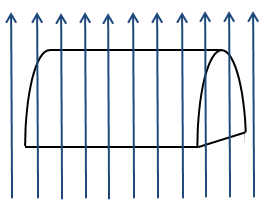
The figure shows a half cylinder of length L and radius R in a uniform electric field E→. What is the electric flux through the flat left and right sides of the cylinder?
0 Nm2/C
You want to integrate over the surface of a closed cylinder of length l and radius R. What is the value of ∫SdA?
2πR² + 2πRl
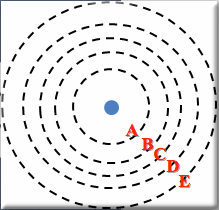
A charge Q is surrounded by five concentric Gaussian surfaces. Surface A is the innermost surface and E is the outermost surface, with B, C and D located between them, respectively. Rank the surfaces from greatest at the top to least at the bottom by the flux going through them. Any surfaces that are equal should be ranked alphabetically.
A, B, C, D, E

A neutral solid metal sphere contains a cavity in which is found a charge Q as shown in the figure. What is the electric field at point A?
kQ/r²_1
The electrostatic field inside any isolated conductor is always ______.
zero
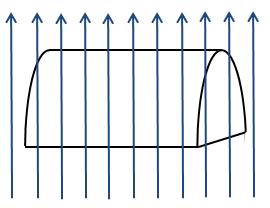
The figure shows a half cylinder of length L and radius R in a uniform electric field E→. What is the electric flux through the flat bottom of the cylinder?
-2ELR

You use a cylinder as a Gaussian surface for finding the field of a cylinder of charge. Over what part of your Gaussian surface will you have a non-zero flux?
The curved surface
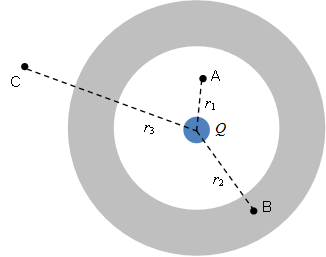
A neutral solid metal sphere contains a cavity in which is found a charge Q as shown in the figure. What is the electric field at point C?
kQ/r²_3
You want to find the electric field a distance d from a sheet of charge. Which of the following shapes is the most useful for your Gaussian surface?
Cylinder, cube
Identify the statement that describes the concept of electrostatic shielding.
Any cavity inside a conductor is totally shielded from any external electric field.
You want to find the electric field outside of a sphere of charge. Which of the following shapes is the most useful for your Gaussian surface?
Sphere
The charges at the sharp end of a conductor (with a large curvature) are ______ distributed.
closely
You want to find the electric field a distance d from a line of charge. Which of the following shapes is the most useful for your Gaussian surface?
Cylinder
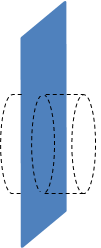
You use a cylinder as a Gaussian surface for finding the field of a plane of charge. Over what part of your Gaussian surface will you have a non-zero flux?
Both end caps
The electric field is always ________ to the surface of a conductor.
perpendicular
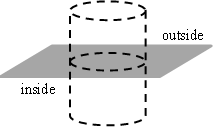
You use a cylinder as a Gaussian surface for finding the electric field just outside of a conducting surface. Over what part of your Gaussian surface is the electric flux non-zero?
The outside end cap
You want to integrate over the surface of a closed cylinder of length l and radius R. What is the value of ∫SdA?
2πR2+2πRl